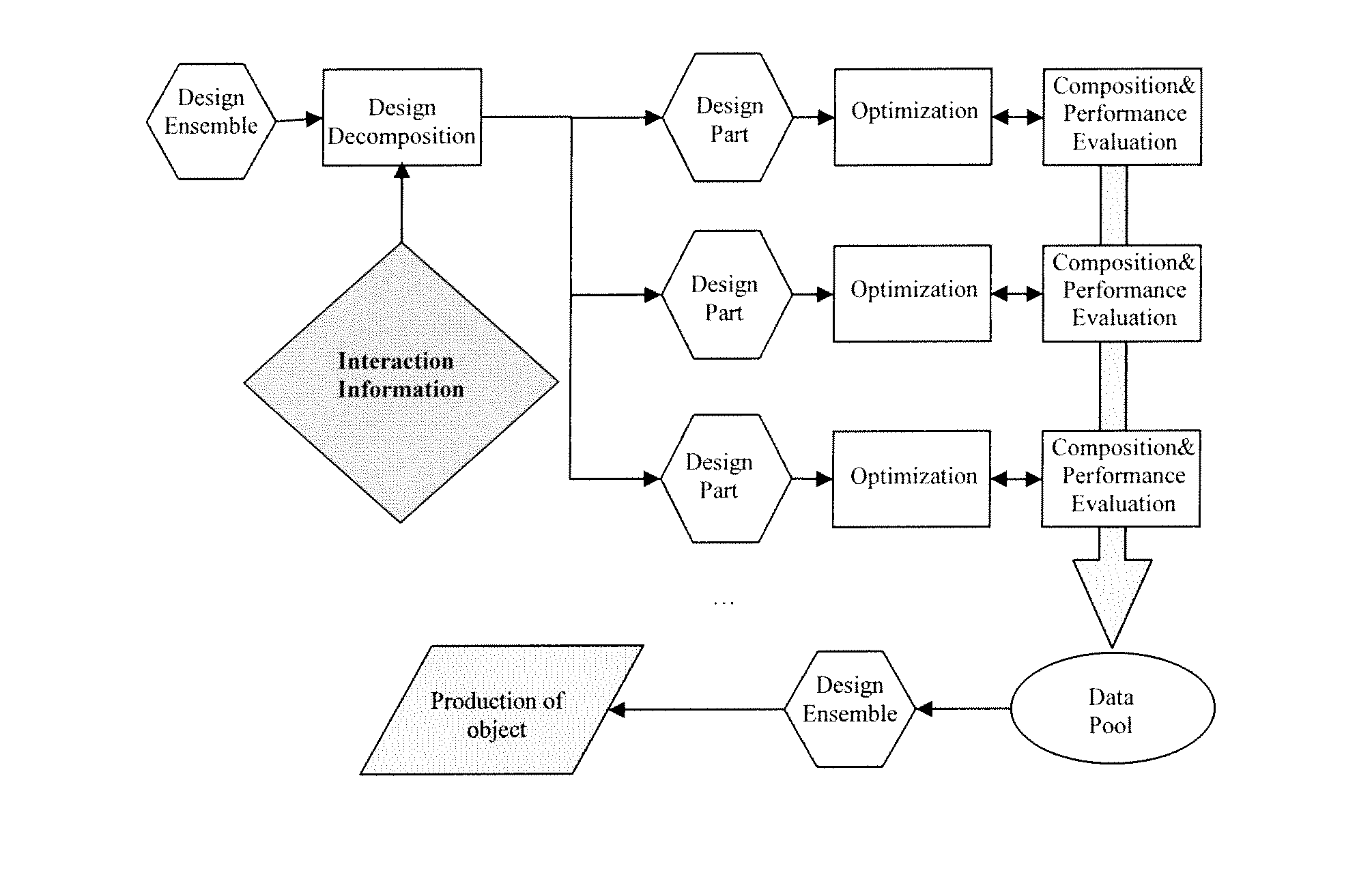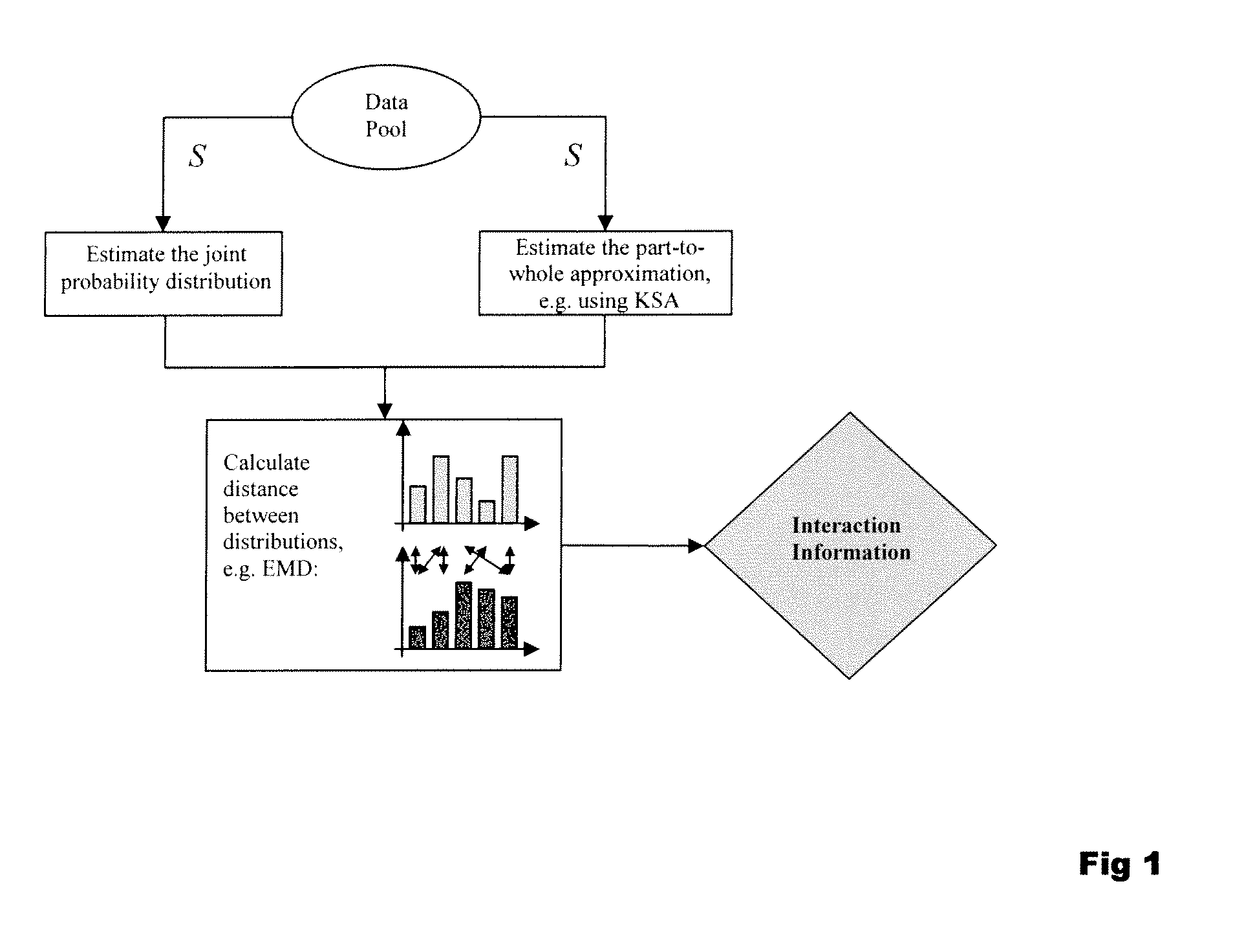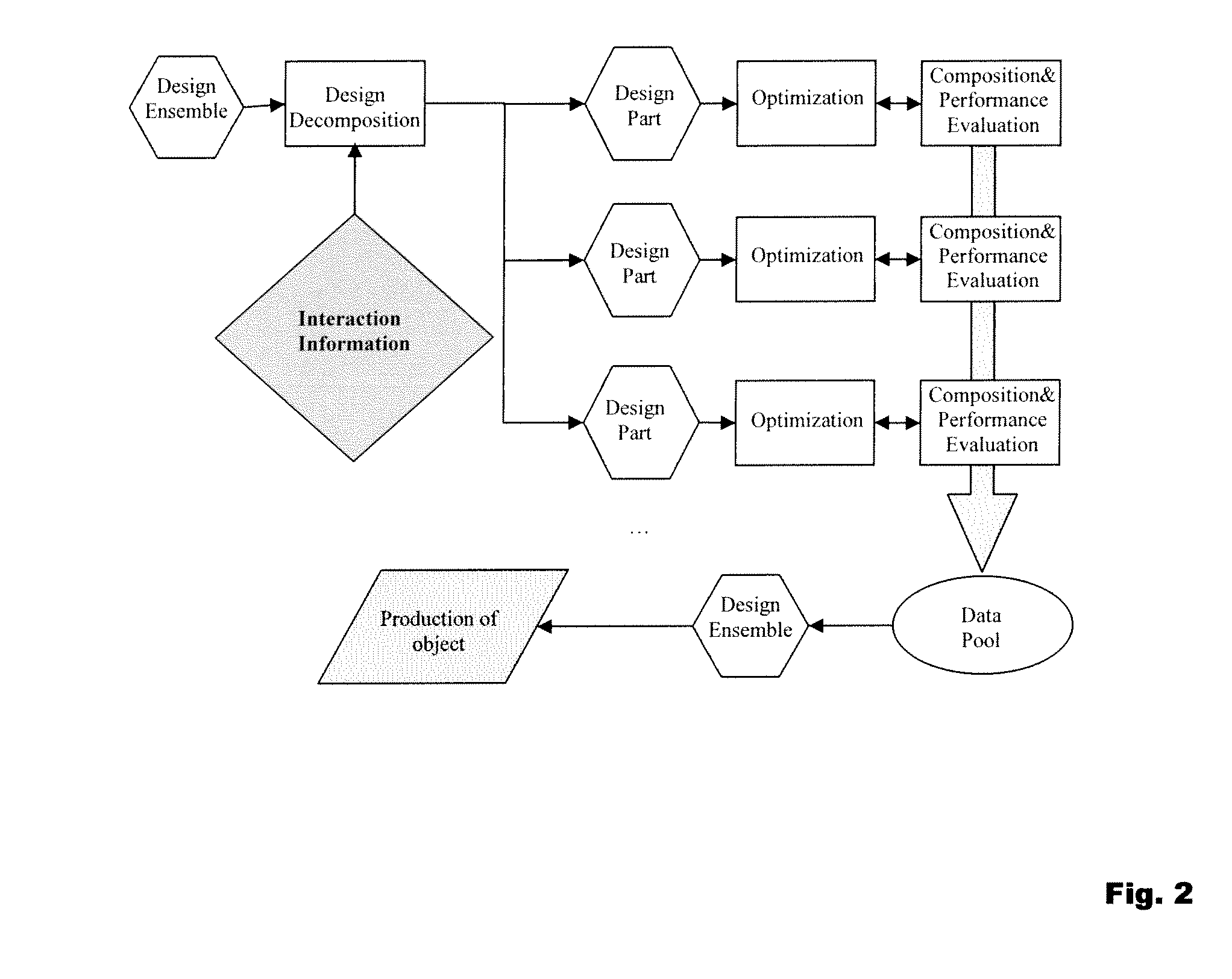Designing real-world objects using the interaction between multiple design variables and system properties
a technology of applied in the field of design real-world objects using the interaction between multiple design variables and system properties, can solve the problems of spearman correlation coefficient limited to analysis, strong dependence, and sensitive correlation coefficien
- Summary
- Abstract
- Description
- Claims
- Application Information
AI Technical Summary
Benefits of technology
Problems solved by technology
Method used
Image
Examples
Embodiment Construction
It is assumed that a pool of designs (e.g. a pool of automotive chassis designs) is parameterized and described by a set of N design variables X={X1, X2, . . . , XN} which control the actual geometric appearance of a design. Let further assume that a set of M dependent variables Y={Y1, Y2, . . . YM} is stored in the design pool which quantify the performance or certain properties of the design. The mutual information or two-way interaction information quantifies the dependency between a design variable Xi and the performance number Yj. The mutual information in terms of Shannon entropies can be formalized as follows:
I(Xi;Yj)=H(Xi)+H(Yj)−H(Xi,Yj).
The mutual information is applicable and limited to the identification of the direct influence of a single design variable on a single performance number. The quantification of the influence of one design variable dependent on another one is not possible. Therefore the interaction information measurement has to be applied which is defined fo...
PUM
 Login to View More
Login to View More Abstract
Description
Claims
Application Information
 Login to View More
Login to View More - R&D
- Intellectual Property
- Life Sciences
- Materials
- Tech Scout
- Unparalleled Data Quality
- Higher Quality Content
- 60% Fewer Hallucinations
Browse by: Latest US Patents, China's latest patents, Technical Efficacy Thesaurus, Application Domain, Technology Topic, Popular Technical Reports.
© 2025 PatSnap. All rights reserved.Legal|Privacy policy|Modern Slavery Act Transparency Statement|Sitemap|About US| Contact US: help@patsnap.com



